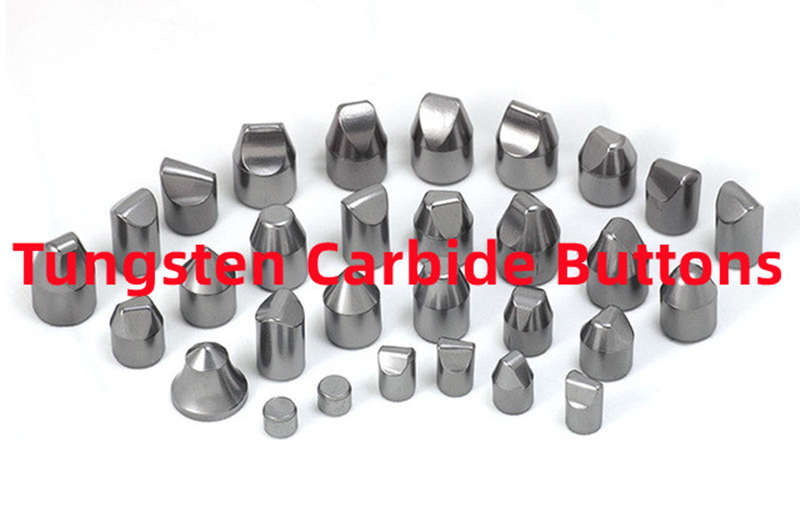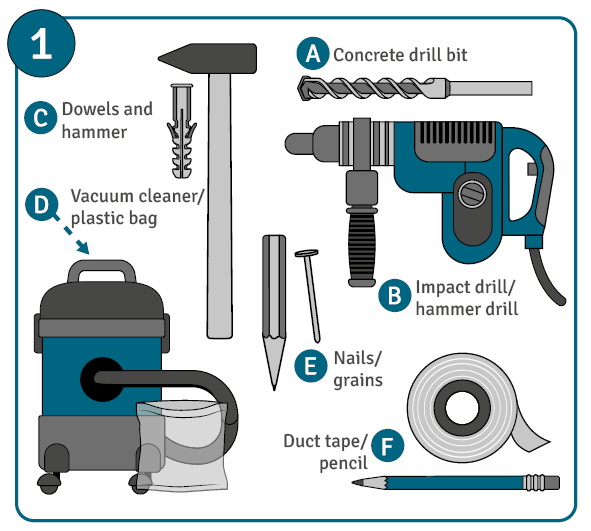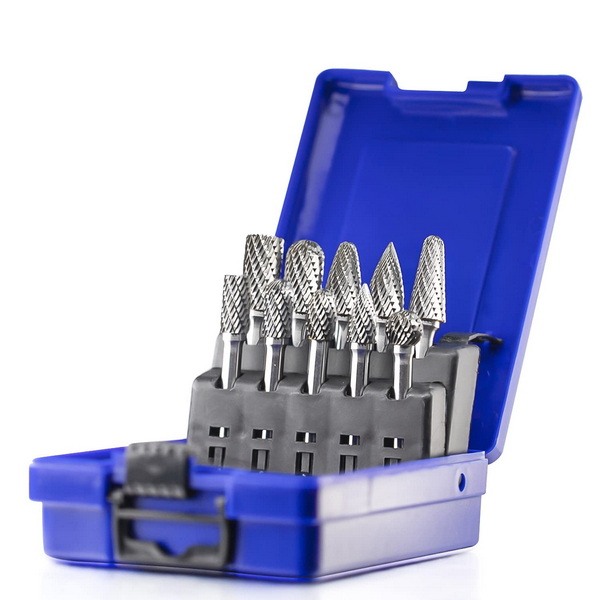Content Menu
● Introduction to Tungsten Carbide
>> Chemical Composition and Structure
● Properties of Tungsten Carbide
>> Hardness and Wear Resistance
>> Thermal Stability
>> Corrosion Resistance
● Applications of Tungsten Carbide
>> Industrial Applications
>> Jewelry Applications
>> Medical Applications
>> Aerospace Applications
● Why Tungsten Carbide Can Shatter
>> Factors Influencing Brittleness
● Enhancing Durability
>> Advanced Binders
>> Coatings and Treatments
>> Design Considerations
● Future Developments
>> Nanotechnology
>> Composite Materials
● Conclusion
● FAQs
>> 1. What is Tungsten Carbide?
>> 2. Is Tungsten Carbide Indestructible?
>> 3. What Applications Use Tungsten Carbide?
>> 4. How Durable is Tungsten Carbide Compared to Steel?
>> 5. Can Tungsten Carbide Rings Be Resized?
● Citations:
Tungsten carbide is renowned for its exceptional hardness and durability, making it a popular choice for various industrial and consumer applications, including cutting tools, drill bits, and jewelry. However, despite its impressive properties, tungsten carbide is not entirely shatter-proof. This article will delve into the characteristics of tungsten carbide, its applications, and the factors that influence its susceptibility to shattering.

Introduction to Tungsten Carbide
Tungsten carbide is a chemical compound consisting of tungsten and carbon atoms, typically in a 1:1 ratio. It is often combined with metallic binders like cobalt or nickel to enhance its toughness and durability. The resulting material, known as cemented carbide, is highly valued for its wear resistance, hardness, and thermal stability.
Chemical Composition and Structure
Tungsten carbide (WC) primarily consists of tungsten and carbon, with the most common form being a hexagonal crystal structure. The addition of binders such as cobalt or nickel creates a cermet (ceramic-metallic composite) that balances hardness with toughness. This composition allows tungsten carbide to maintain its structural integrity under extreme conditions.
Properties of Tungsten Carbide
Hardness and Wear Resistance
Tungsten carbide ranks between 9 and 9.5 on the Mohs hardness scale, making it one of the hardest materials available, surpassed only by diamond. This hardness, combined with its high density, provides excellent wear resistance, allowing it to withstand abrasive conditions and maintain its shape over time.
Thermal Stability
With a melting point exceeding 2,870°C (5,200°F), tungsten carbide is suitable for high-temperature applications, such as cutting tools and machinery components. Its thermal conductivity ensures efficient heat dissipation, maintaining performance in demanding environments.
Corrosion Resistance
Tungsten carbide exhibits excellent corrosion resistance, making it durable in harsh chemical environments. This property is particularly valuable in applications exposed to moisture and corrosive substances.
Applications of Tungsten Carbide
Industrial Applications
Tungsten carbide is widely used in manufacturing for cutting tools, drill bits, and wear-resistant components due to its hardness and durability. It is also employed in aerospace and oil drilling equipment for its thermal stability and resistance to wear. In these applications, tungsten carbide's ability to withstand high temperatures and maintain its structural integrity under stress is crucial.
Jewelry Applications
In the realm of jewelry, tungsten carbide is popular for wedding bands and fashion rings due to its scratch resistance and durability. However, its brittleness means it can shatter under extreme impact, which is a consideration for consumers who may be active or work in environments where jewelry could be subjected to stress.
Medical Applications
Tungsten carbide is also used in medical devices, such as surgical instruments and implants, where its hardness and corrosion resistance are beneficial. Its biocompatibility and ability to withstand sterilization processes make it suitable for these applications.
Aerospace Applications
In aerospace, tungsten carbide is used for components that require high strength and resistance to wear, such as rocket nozzles and engine parts. Its ability to maintain performance under extreme conditions makes it an ideal material for these applications.

Why Tungsten Carbide Can Shatter
Despite its hardness, tungsten carbide is not shatter-proof. Its rigidity makes it susceptible to cracking or shattering under sharp impacts or extreme pressure. This brittleness is a common trait among very hard materials, including diamonds. The lack of flexibility means that tungsten carbide cannot absorb shocks effectively, leading to potential fractures.
Factors Influencing Brittleness
1. Material Composition: The ratio of tungsten carbide to binder materials can affect its toughness. Higher binder content can improve toughness but may reduce hardness.
2. Manufacturing Process: The method of production, including sintering conditions, can influence the final product's microstructure and mechanical properties.
3. Environmental Conditions: Exposure to extreme temperatures or corrosive environments can weaken the material over time.
Enhancing Durability
To enhance the durability of tungsten carbide products, manufacturers often focus on optimizing the material composition and manufacturing processes. Techniques such as using advanced binders or improving the sintering process can help balance hardness with toughness.
Advanced Binders
The use of advanced binders, such as nanomaterials or specialized alloys, can improve the toughness of tungsten carbide without compromising its hardness. These binders can enhance the material's ability to absorb impacts and reduce brittleness.
Coatings and Treatments
Applying coatings or surface treatments can also enhance the durability of tungsten carbide products. These coatings can provide additional protection against corrosion and wear, extending the lifespan of the material in harsh environments.
Design Considerations
In designing products with tungsten carbide, engineers must consider the potential for impact and stress. This includes selecting appropriate geometries and ensuring that the material is used in applications where its properties can be fully utilized without excessive risk of damage.
Future Developments
Research into new materials and manufacturing techniques continues to improve the properties of tungsten carbide. Advances in nanotechnology and composite materials are expected to further enhance its toughness and durability, potentially expanding its range of applications.
Nanotechnology
The integration of nanomaterials into tungsten carbide can significantly improve its mechanical properties. Nanoparticles can act as reinforcements, enhancing the material's strength and toughness.
Composite Materials
Developing composite materials that combine tungsten carbide with other materials can also improve its performance. These composites can offer a balance of hardness, toughness, and flexibility, making them suitable for a wider range of applications.
Conclusion
Tungsten carbide is an exceptionally hard and durable material, but it is not entirely shatter-proof. Its brittleness under extreme conditions means it can crack or shatter, despite its impressive hardness and wear resistance. Understanding these properties is crucial for selecting the right applications and handling tungsten carbide products appropriately.

FAQs
1. What is Tungsten Carbide?
Tungsten carbide is a chemical compound made from tungsten and carbon, often combined with metallic binders like cobalt or nickel. It is renowned for its hardness, wear resistance, and thermal stability.
2. Is Tungsten Carbide Indestructible?
No, tungsten carbide is not indestructible. While it is highly resistant to scratches and wear, its brittleness means it can shatter under sharp impacts or extreme pressure.
3. What Applications Use Tungsten Carbide?
Tungsten carbide is used in industrial applications such as cutting tools and machinery components, as well as in jewelry for its durability and aesthetic appeal. It is also used in medical devices and aerospace equipment.
4. How Durable is Tungsten Carbide Compared to Steel?
Tungsten carbide is significantly harder and more wear-resistant than steel, making it ideal for demanding industrial applications where durability is crucial.
5. Can Tungsten Carbide Rings Be Resized?
No, tungsten carbide rings cannot be resized due to their extreme hardness and brittleness. Any attempt to resize could cause the ring to crack or lose its shape.
Citations:
[1] https://www.linde-amt.com/resource-library/articles/tungsten-carbide
[2] https://redwoodrings.com/blogs/redwood-rings-blog/tungsten-ring-break
[3] https://shop.machinemfg.com/the-pros-and-cons-of-tungsten-carbide-a-comprehensive-guide/
[4] https://en.wikipedia.org/wiki/Tungsten_carbide
[5] https://www.retopz.com/57-frequently-asked-questions-faqs-about-tungsten-carbide/
[6] https://www.thermalspray.com/questions-tungsten-carbide/
[7] https://carbideprocessors.com/pages/carbide-parts/tungsten-carbide-properties.html
[8] https://www.tungstenringsco.com/blog/2012/07/why-do-tungsten-carbide-rings-break-or-shatter/
[9] https://shop.machinemfg.com/tungsten-vs-tungsten-carbide-key-differences/
[10] https://eternaltools.com/blogs/tutorials/tungsten-carbide-an-informative-guide
[11] https://zaffre.com.au/blogs/zaffre-editorial/12996521-what-does-it-take-to-break-a-tungsten-carbide-ring
[12] https://www.britannica.com/science/tungsten-carbide
[13] https://www.larsonjewelers.com/pages/the-pros-cons-of-tungsten-carbide-rings
[14] https://www.justmensrings.com/blogs/justmensrings/evaluating-the-durability-of-tungsten-rings-against-wear-and-tear
[15] https://www.carbideprobes.com/wp-content/uploads/2019/07/TungstenCarbideDataSheet.pdf
[16] https://jewelrybyjohan.com/blogs/metals-and-materials/the-pros-and-cons-of-tungsten-rings
[17] https://www.thorum.com/en-in/blogs/log/15-benefits-of-tungsten-rings-the-ultimate-durable-mens-jewelry
[18] https://www.linkedin.com/pulse/properties-tungsten-carbide-shijin-lei-2c
[19] https://www.reddit.com/r/askscience/comments/x1el6/i_have_a_ring_made_of_tungsten_carbide_it_has/
[20] https://jewelrybyjohan.com/blogs/metals-and-materials/how-durable-is-tungsten
[21] https://www.zhongbocarbide.com/does-tungsten-carbide-shatter-easily.html
[22] https://www.larsonjewelers.com/pages/tungsten-rings-pros-cons-facts-myths
[23] https://stock.adobe.com/search?k=tungsten+carbide
[24] https://www.istockphoto.com/photos/tungsten-carbide
[25] https://www.shutterstock.com/search/tungsten
[26] https://www.dymetalloys.co.uk/what-is-tungsten-carbide
[27] https://stock.adobe.com/search?k=carbide
[28] http://www.chinatungsten.com/Tungsten-Carbide/Properties-of-Tungsten-Carbide.html
[29] https://www.gettyimages.in/photos/tungsten
[30] http://www.kovametalli-in.com/properties.html
[31] https://www.istockphoto.com/photos/tungsten-carbide-drill-bits
[32] http://www.tungsten-carbide.com.cn/tungsten-carbide-properties.html
[33] https://periodictable.com/Elements/074/pictures.html
[34] https://www.shutterstock.com/search/tungsten-carbide
[35] https://www.freepik.com/free-photos-vectors/tungsten-carbide
[36] https://www.linkedin.com/pulse/7-questions-tungsten-carbide-burrs-shijin-lei
[37] https://www.tungstenworld.com/pages/tungsten-news-common-questions-about-tungsten
[38] https://www.linkedin.com/pulse/3-questions-tungsten-carbide-buttons-shijin-lei
[39] https://consolidatedresources.com/blog/10-facts-about-tungsten-carbide/
[40] https://www.tungco.com/insights/blog/frequently-asked-questions-used-tungsten-carbide-inserts/
[41] http://www.carbidetechnologies.com/faqs/
[42] https://tuncomfg.com/about/faq/
[43] https://etrnl.com.au/blogs/news/everything-you-need-to-know-about-tungsten-rings
[44] https://ewsllp.in/why-to-choose-tungsten-carbide-over-other-metals/
[45] https://www.justmensrings.com/blogs/justmensrings/what-are-the-differences-between-titanium-and-tungsten
[46] http://www.tungsten-carbide.com.cn
[47] https://www.alamy.com/stock-photo/tungsten-carbide.html
[48] https://www.ipsceramics.com/technical-ceramics/tungsten-carbide/
[49] https://create.vista.com/photos/tungsten-carbide/
[50] https://www.vedantu.com/chemistry/tungsten-carbide
















